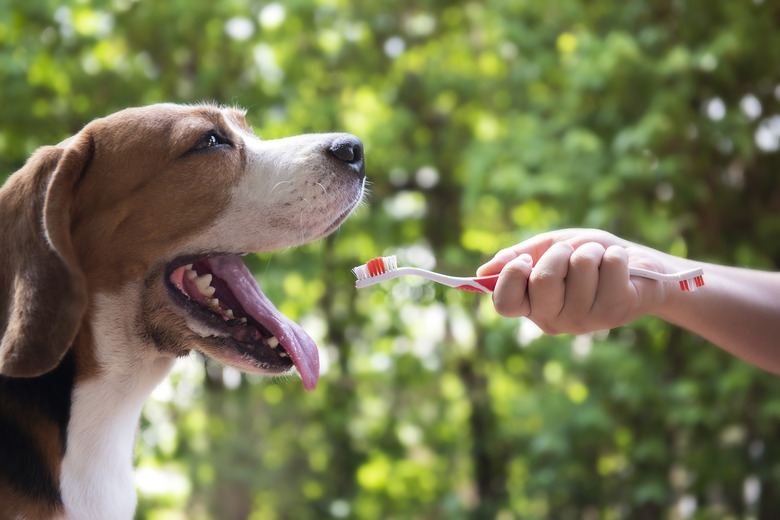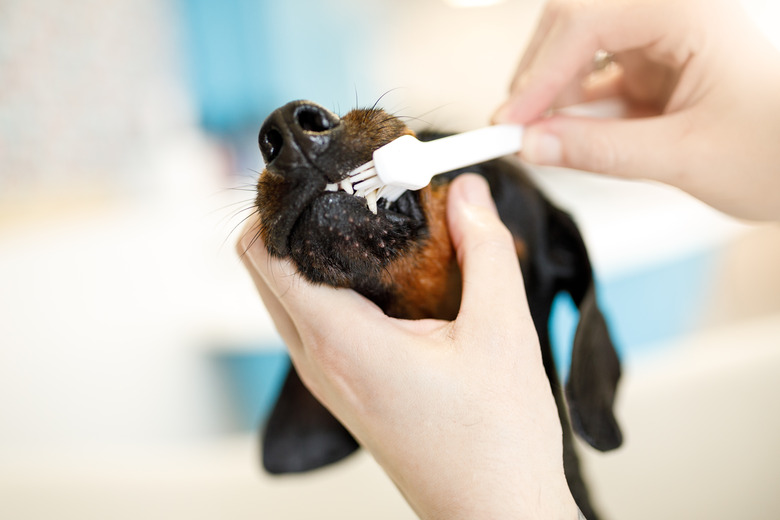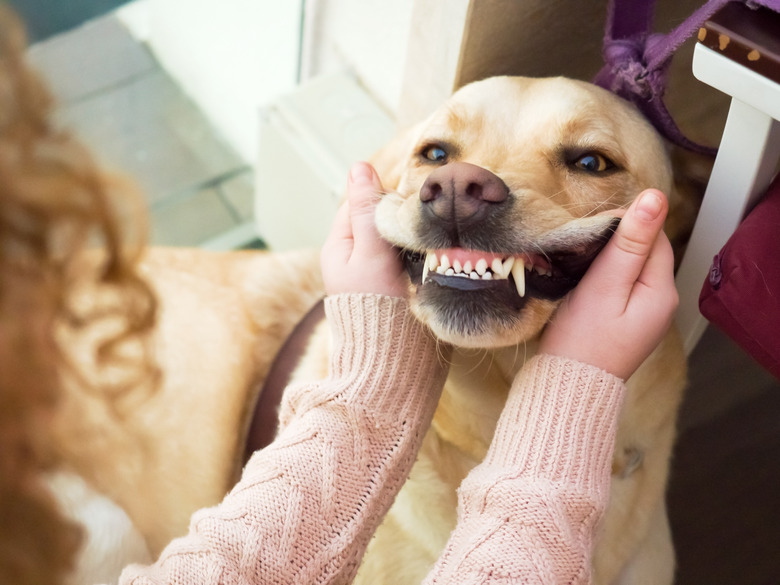How To Brush A Dog's Teeth Without Toothpaste
Dogs haven't needed humans to brush their teeth for most of their existence, but that doesn't mean it's not something you should skip if you want to care for your pet in the best way possible. Just as man-made pet meds and devices have helped dogs lead better, healthier lives, so can tooth-brushing improve a dog's health.
If you don't have or don't want to use toothpaste, you can still provide excellent oral hygiene for your pet.
Why brush a dog’s teeth?
Why brush a dog's teeth?
Just as with a human's teeth, brushing removes plaque, gingivitis and bacteria that can degrade enamel and cause cavities. Brushing can also help remove pieces of food that become stuck between teeth and gums, which can eventually lead to soreness or even infection.
In addition to brushing your dog's teeth, you'll want to brush and massage her gums and tongue. The gums help hold teeth in place and prevent oral health. Brushing them helps strengthen them and removes bacteria.
Dog toothpaste and brush
Dog toothpaste and brush
To give an effective tooth-brushing without toothpaste, you'll need a brush or soft cloth, along with a mild cleaning agent. Avoid "hairy" cloths that can leave strands or threads between teeth. Start brushing with no cleaner to get your dog used to the feeling of brushing.
Human toothpaste can upset your dog's stomach if swallowed, while baking soda contains alkaline that imbalance your dog's digestive processes, according to Veterinary Centers of America.
Be wary of pet blogs you find via Google. Many recommend baking soda or plants that can be toxic to dogs. Contact your vet for a recommendation of commercial or homemade dog teeth cleaning products for dog teeth — there are even some peanut butter and poultry flavor dog toothpastes. Some of these come in liquid or gel form. Others are dog wipes you can use instead of a toothbrush. Ask for tips for making natural dog toothpaste.
If you've recently adopted your dog or received her from someone else who had been caring for her, find out if they used a particular cleaner the dog is used to.
How to brush the teeth
How to brush the teeth
Start brushing your dog's teeth in a quiet area away from noise and distractions. Gently lift the dog's lips and using your fingers only, make a first pass over the teeth and gums to get your pet used to the feeling. Once you see your dog is not fighting you and enjoys the massage, put some of your cleaner on one of your fingers and let the dog smell it. Repeat the gum and tooth massage with your chosen cleaning agent, again, using just your finger.
If your dog is OK with this naked-finger process, introduce the cloth or a toothbrush, letting the dog see and smell it first. Use a brush specifically made for dogs. Some pet toothbrushes are angled, while some have no handle, instead slipping over your finger for easier use. Brush gently up and down, moving around the mouth. Brush side to side, and then in a circular motion. Finish by very gently brushing the dog's tongue.
How often should you brush?
How often should you brush?
Veterinary Care Centers of America recommends brushing your dog's teeth twice each day, with a minimum of three times per week for safe oral health. Even with a good brushing routine, it's a good idea to have your pet's teeth professionally cleaned once each year, recommends Banfield Pet Hospital.
The sooner you get started, the sooner your dog will get used to brushings. If done correctly, teeth-brushing is pleasant for dogs and something they'll look forward to.


